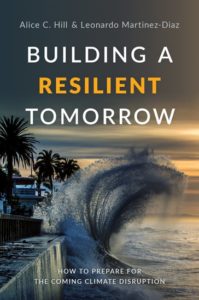 One of the things that often seems to be lost in the deluge of popular reporting on global climate change, particularly when the focus is on the ideological professional wrestling matches of staged false equivalency so beloved of cable news channels, is the fact that outside of public view, some remarkably well-informed people at very high levels of government and industry are working extraordinarily hard to determine what is most likely to happen and how the effects of what occurs will need to be faced – people such as Alice C. Hill and Leonardo Martinez-Diaz, for example.
One of the things that often seems to be lost in the deluge of popular reporting on global climate change, particularly when the focus is on the ideological professional wrestling matches of staged false equivalency so beloved of cable news channels, is the fact that outside of public view, some remarkably well-informed people at very high levels of government and industry are working extraordinarily hard to determine what is most likely to happen and how the effects of what occurs will need to be faced – people such as Alice C. Hill and Leonardo Martinez-Diaz, for example.
In their new book Building a Resilient Tomorrow; How to Prepare for the Coming Climate Disruption, Judge Hill and Dr. Martinez-Diaz draw upon their extensive experiences at the highest levels of national-level government agencies and international level policy institutes to explain what is being examined and how it is being approached. They also present real-world example filled analyses of “key developments and anticipated challenges in the emerging field of climate resilience.”
While there may be some who are perhaps troubled that a field such as climate resilience is emerging instead of all effort being devoted exclusively toward stopping it, the fact remains that global climate change is happening, its effects – many of which are not intuitive in how they will likely occur – will need to be faced, and steps will taken to mitigate these effects as much as humanly possible. Personally, I am very happy to discover that despite the public-level, absurdly ideological “dissemble, deny, and distract” pronouncements of the present administration, some of the “smartest people in the room” have long been – and still are – at work seeking to understand the coming challenges we will all face very soon and determine the best ways we will have available to us to manage them as best we can given the circumstances.
